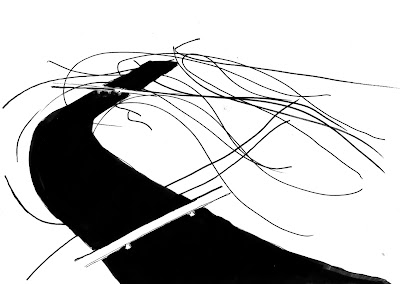The model was constructed from what was found on site. In most common cases the vernacular is perceived as using what is already existing on site in order to construct some sort of design. This was the misconception in which this model was constructed in, however its overall construction fits in with what I learned from site analysis at South Kensington.
The last image was a random shape drawn into the ground. This was drawn into the ground according to the feelings I had of the site. This could potentially be a reflection on the graffiti found in the warehouses.
The second last image shows all of the parts which are found on site. This could potentially reflect all of the loose rubbish and abandoned building facades found on site. In the initial stage of the model the sticks were used to form a shelter-like structure. This was because of the vast open space exposed to sunlight. After close magnification of the model, immediately after a couple of minutes insects started to move on the structure. Their intention of moving onto my structure is unknown, however the form made from the sticks created an object that they felt comfortable in. In the warehouses the rubbish and abandoned building facades could form something that the user of that particular site needs? Did the insects feel safe on the stick structure? Do the users of the warehouses feel safe?
The final two show the form without a roof (grass) and with a grass roof. This shows that the model can continually be built upon and more layers can be added onto the structure. Another important factor of the vernacular is that the object(s) that are designed in the landscape must adapt in the land and adapt to its processes. With the collage I intended to show that graffiti can also be layered upon and that it is not the final product of a design. It can become something more...










